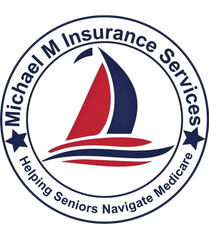Your Guide to the Most Important Medicare Dates of the Year
Every fall, Medicare beneficiaries across the country start hearing a flood of ads, mailers, and
phone calls about the Annual Enrollment Period (AEP). It can feel overwhelming — but when you strip away the noise, AEP is simply a window of time when you can review your Medicare coverage and make changes if needed.
In this post, we’ll walk through exactly what AEP is, what you can do during this period, and how to know whether you should take action.
The Medicare Annual Enrollment Period runs from October 15 through December 7 each year.
- Any changes you make during this window take effect on January 1 of the following year.
- Once the window closes, you can’t make additional changes until the next AEP — unless you qualify for a Special Enrollment Period.
When Is the Medicare Annual Enrollment Period?
During AEP, you have the flexibility to:
- Switch from Original Medicare to a Medicare Advantage (Part C) plan
- Switch from Medicare Advantage back to Original Medicare (with or without a Medicare Supplement,if eligible)
- Change from one Medicare Advantage plan to another
You can make multiple changes within this timeframe, but remember: the last choice you
make before December 7 is the one that will go into effect on January 1.
What You Can Do During AEP
Do You Have to Make a Change?
One of the biggest misconceptions about AEP is that everyone must change their coverage.
That’s simply not true.
If your current plan still covers your doctors, prescriptions, and fits your budget, you may be fine
staying put. However, it’s important to review your Annual Notice of Change (ANOC) each year to make sure your plan isn’t changing in ways that might affect you — like higher premiums, different drug formularies, or providers leaving the network.
Why AEP Matters
Here’s why this window is so important:
- Plans change every year — premiums, deductibles, networks, and drug coverage may look different than they did last year.
- Your health changes — new prescriptions, specialist visits, or hospital stays may mean your current plan no longer fits.
- Your budget matters — comparing plan options could help you save money while keeping the coverage you need.
How to Prepare for AEP
Here are a few simple steps to take before October 15:
- Review your ANOC — note any premium or benefit changes.
- List your current medications — check if they’ll still be covered affordably.
- Check your providers — make sure your doctors remain in-network if you’re in a Medicare Advantage plan.
- Talk to a trusted resource — Medicare.gov’s Plan Finder is helpful, but an independent broker can walk you through your personal options in plain language.
Key Takeaway
The Medicare Annual Enrollment Period is not about forcing you to change — it’s about giving
you the opportunity to adjust if your needs or your plan have changed. Whether you switch plans or stay with what you have, the most important step is reviewing your coverage

